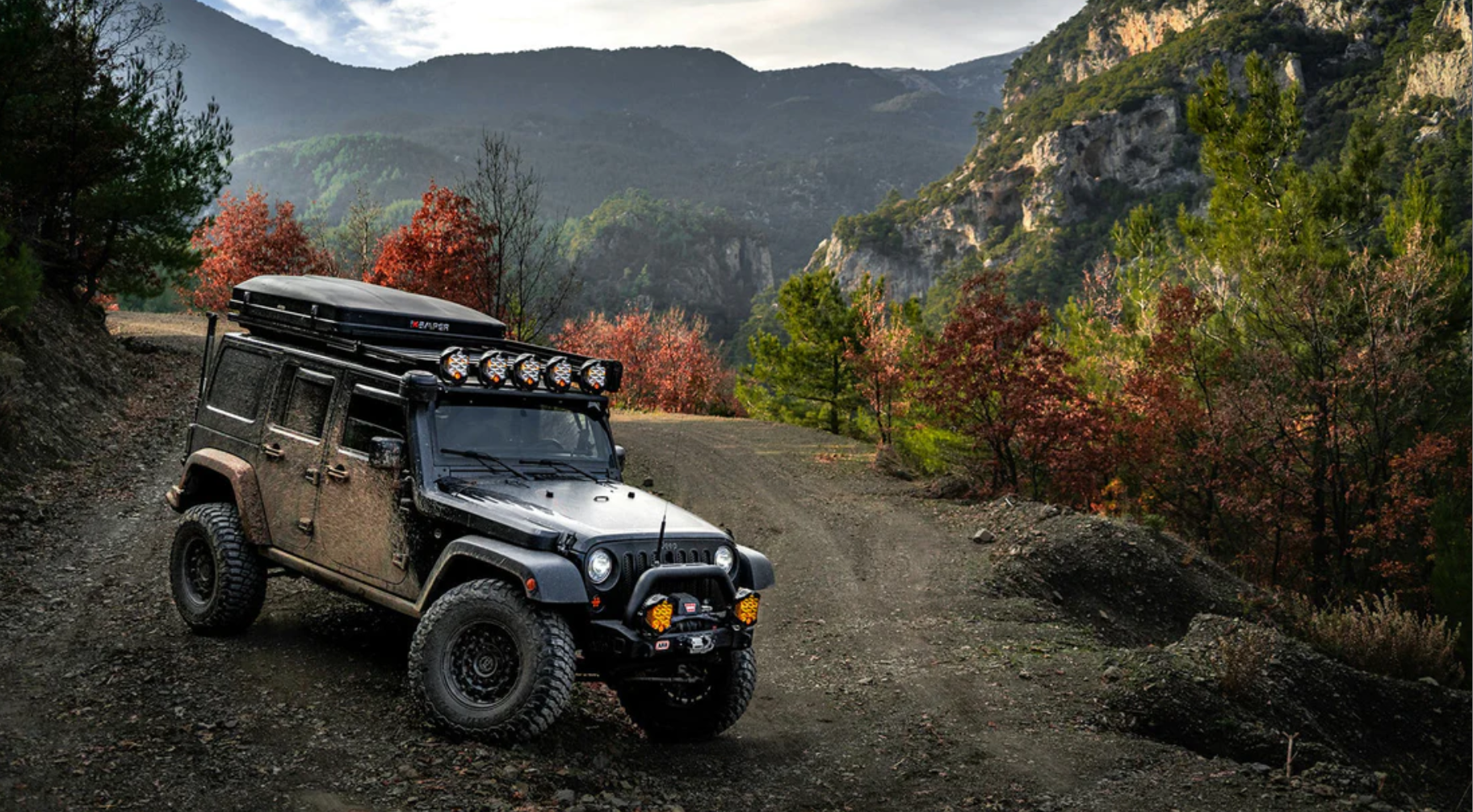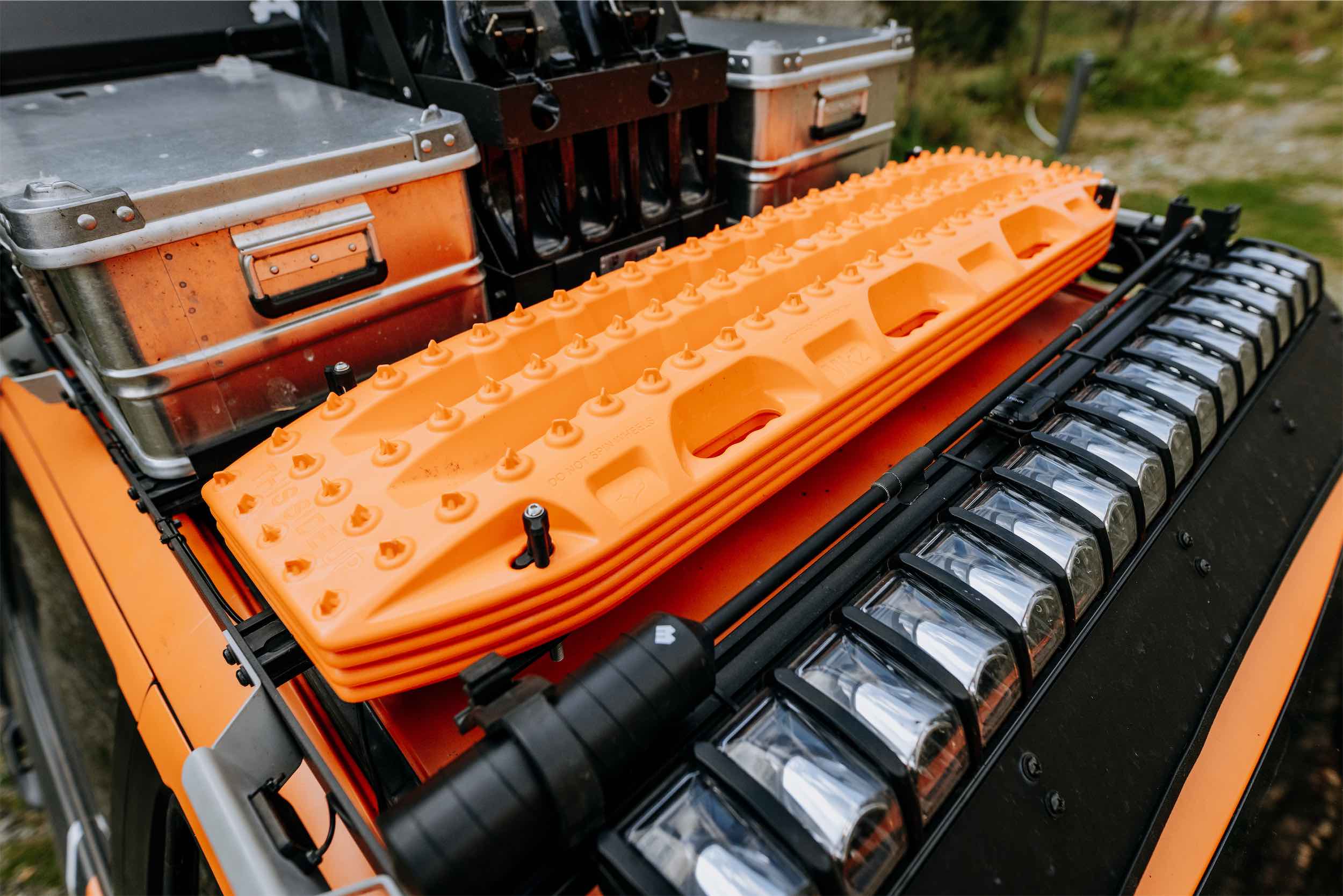
Getting Started with Overlanding: Gear, Locations & DIY vs Pro Installs
Sep 24, 2025
Ryan Later
Overlanding is more than just camping or off-roading — it's about self-reliant travel to remote destinations where the journey is just as important as the destination. If you're new to the world of overlanding, it can feel overwhelming at first: what gear do you need? Where do you go? And should you hire someone to install your equipment or go the DIY route? This guide will walk you through the essentials of starting your first overland adventure. Overlanding combines off-road travel and camping, usually involving 4x4 vehicles or adventure motorcycles. Unlike traditional road trips, overlanding emphasizes remote travel, self-sufficiency, and long-term adventure. You don’t need to drop thousands of dollars to get started. Start with the basics — gear that improves safety, reliability, and comfort. Reliable Vehicle: A high-clearance 4x4 vehicle is ideal. Think Toyota Tacoma, Jeep Wrangler, Land Cruiser, etc. Tires: All-terrain or mud-terrain tires suited to your expected terrain. Recovery Gear: Include a tow strap, soft shackles, traction boards, and a portable air compressor. Navigation Tools: GPS apps like Gaia GPS or OnX Offroad. A paper map is also a smart backup. Roof Rack or Storage System: For organizing and carrying gear. Camping Setup: Tent (rooftop or ground) Sleeping bag and pad Camp kitchen (stove, cookware, utensils) Cooler or 12V fridge Lighting: Headlamp, camp lights, or vehicle-mounted lighting. First Aid Kit & Emergency Supplies: Always carry these — especially if traveling solo or remote. 💡 Pro Tip: Focus on building your setup over time. Don't feel like you need the most expensive or complete kit to get started. The magic of overlanding lies in discovering remote, lesser-known spots — but where do you start? Apps & Maps: Gaia GPS, OnX Offroad, iOverlander, Trails Offroad Online Communities: Reddit's r/overlanding, Facebook groups, Overland Bound forums Guidebooks: There are region-specific books with GPS routes and campsite suggestions. BLM & National Forest Land: In the U.S., these public lands often allow dispersed camping and off-road travel. When choosing your first trip: Start with shorter routes closer to home. Choose an area with cell coverage and emergency access, especially if solo. Avoid overly technical trails — a scenic fire road is a perfect place to start. One of the biggest questions newcomers face: Should you install your own gear or pay a professional? ✅ Pros: Saves money Builds hands-on experience with your vehicle Easier to troubleshoot in the field ❌ Cons: Time-consuming Risk of error (especially with electrical or suspension systems) May void warranties if not done correctly ✅ Pros: Done quickly and safely Ideal for complex installs (electrical systems, rooftop tents, lift kits) Comes with a warranty or service guarantee ❌ Cons: Costs add up fast Less personal knowledge of your setup Do it yourself for basic installs like roof racks, recovery gear mounts, and drawer systems. Hire a pro for electrical work (like dual battery systems), suspension upgrades, or anything that affects safety or vehicle integrity. Don’t fall into the trap of thinking you need a fully built rig to enjoy overlanding. Some of the best experiences come from simple setups and spontaneous adventures. Do a shakedown trip (1-2 nights) before heading far off-grid. Join a group or go with a buddy for your first outing. Learn basic vehicle recovery and maintenance. Keep a journal or log to refine your setup over time. Overlanding is a lifelong learning experience. You’ll make mistakes, learn your preferences, and upgrade your gear as you go. The important part? Start. Pick a weekend, gather your essentials, and get out there. Still unsure about gear or installs? Drop a comment below — or check out our upcoming beginner's gear guide! Would you like this turned into a downloadable PDF, formatted for your site, or split into multiple posts?
1. The Basics: What Is Overlanding?
2. Essential Gear for Your First Overland Trip
Must-Have Starter Gear:
3. How to Find Overlanding Locations
Resources to Find Your First Route:
4. DIY vs Professional Equipment Installation
DIY Installation:
Professional Installation:
Our Advice:
5. Final Thoughts: Keep It Simple
Starting Overland Tips:
Ready to Hit the Trail?

